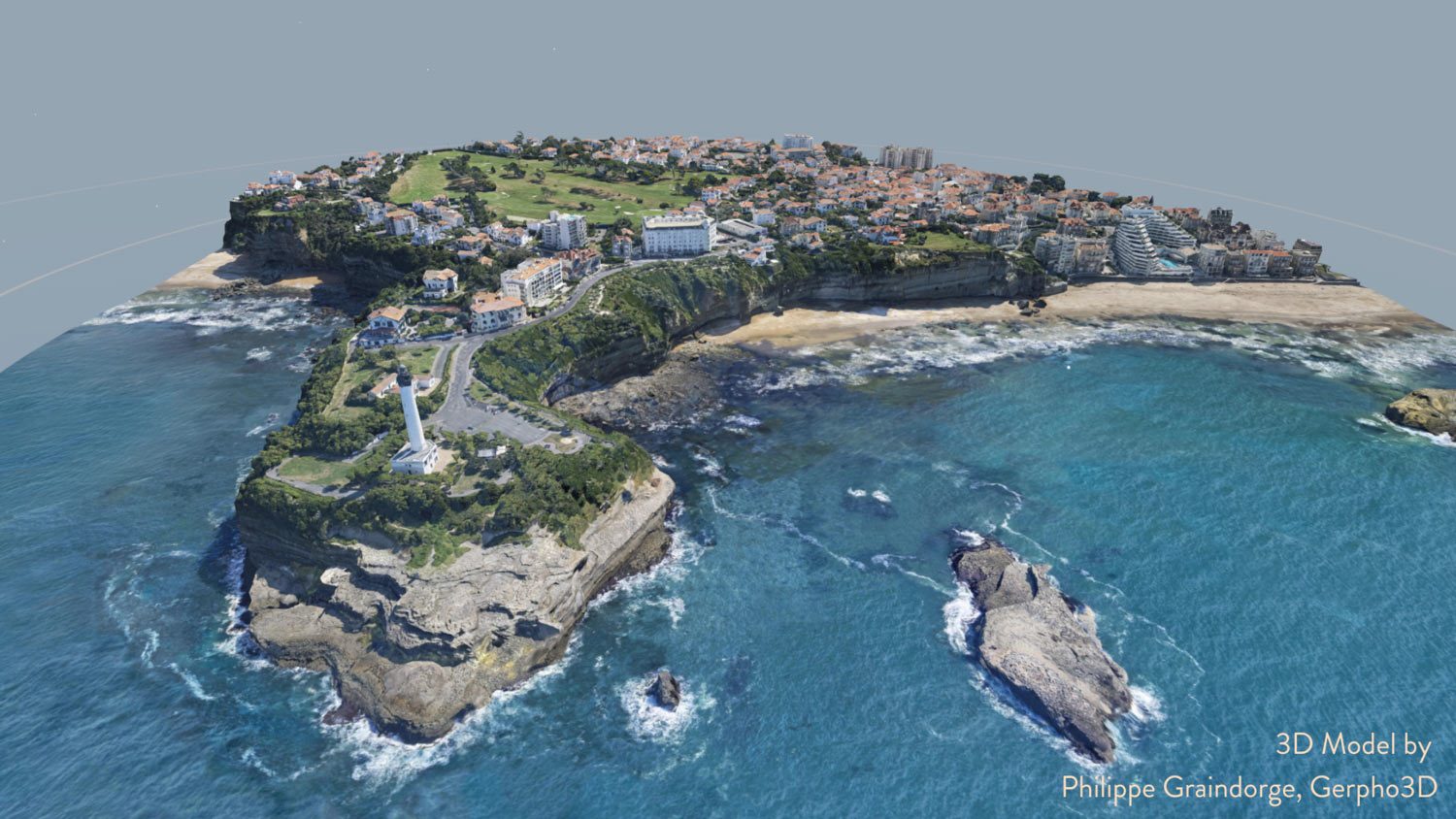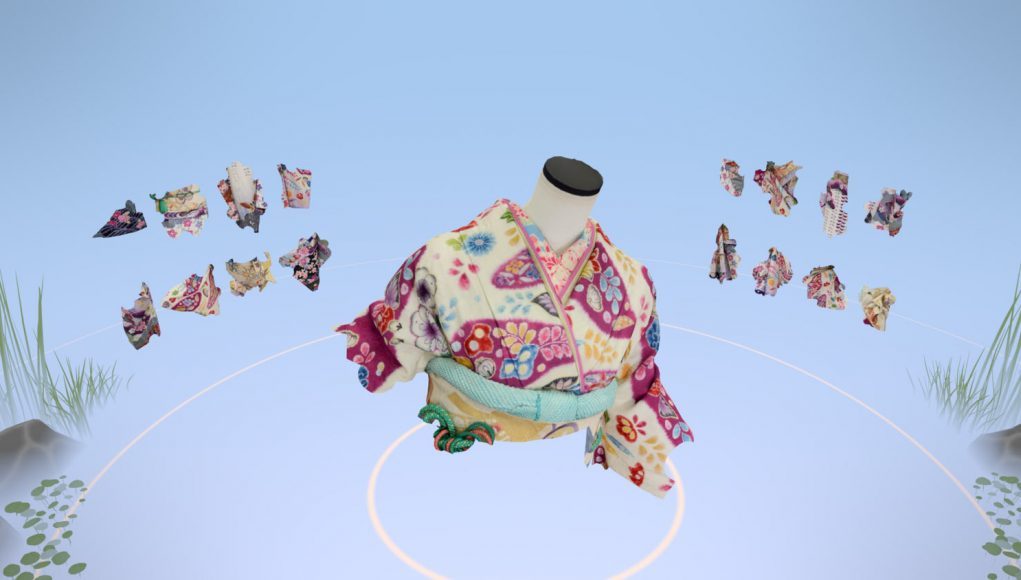Puzzling Places takes jigsaw puzzles in a new and clever direction by offering up multiple difficulties of some highly textured and interesting 3D scenes, making for an experience that’s better than either physical 2D or 3D puzzles in almost every way.
Puzzling Places Details:
Available On: Oculus Quest, (PSVR coming in 2021)
Price: $15
Developer: Realities.io
Release Date: September 2nd, 2021
Reviewed On: Oculus Quest 2
Gameplay
The concept is simple: the game includes 16 puzzles at launch, all of which can be fractured into 25, 50, 100, 200, and 400 pieces. All scenes are based on photogrammetry—a technique for taking high resolution photos of a thing and stitching them together to make a 3D model—so puzzles have an extreme lifelike quality to them that wholly artificial objects typically don’t. Click the pieces together in any order you like and voilà: you have a detailed little model of something cool in front of you.
In Puzzling Places you’ll be able to build things like millennia-old temples in Armenia, a delicate and expressive Japanese kimono, and a densely-packed drawing room in Sweden that, when pushed to the max 400-piece difficulty becomes a smorgasbord of chairs, rich tapestries, and all sorts of finery that may take you literal hours to assemble. Playing Puzzling Places really can be as simple as clicking a large stretch of beach together like a Hot Wheels tracks, or going in to match miniscule bits of houses that all look very similar.

After the tutorial, the game invites you to run through a few 25-piece puzzles first to get your legs. Beyond that, you won’t hear a peep out of the game, even as you head on to more difficult puzzle configurations. Although the full gamut of puzzles available at launch feels fairly low in number, all puzzles have been thoughtfully fragmented from 25-400 pieces so you can play each level as if it were new. There’s multiple hours of puzzling here and Realities.io promises more is yet to come post-launch. A bit more on difficulty in Immersion though.
Anyway, here’s a great mixed reality look at what it feels like to build in Puzzling Places, courtesy of Fabio Dela Antonio:
The first time I played @PuzzlingPlaces it was still in beta, and it’s now available on the Oculus store so I had to try recording it in #MixedReality again. There were a few video artifacts, but the game ran perfectly and it has so many new puzzles now
#OculusQuest2 #VR pic.twitter.com/WFB6gYsi0a
— Fabio Dela Antonio (@fabio914) September 3, 2021
Like conventional puzzles, you’re not only tasked with matching the crenelated edges of each piece, but also keeping tabs on the image’s different textures and how they align. An efficient puzzler tends to group pieces and solve the most obvious bits first, which thankfully is an uncomplicated thing in Puzzling Places since you can easily summon pieces from the puzzle backboard and either leave them anywhere in mid-air, or return them to any spot on the board you want. Once you create your system for sorting pieces, the real challenge begins and you’re forced to examine every aspect of the piece, looking for more context clues like stitching patterns, shadows from buildings, and logical flow from one to the next. Is that a bit of chandelier, or maybe a chair leg?
By default a few reference images taken from different angles are placed down by your feet, but if you’re looking for a real challenge you can turn them off and attack each puzzle without truly knowing the end result.

There are two tools in the game to make things easier, although they’re really more suited for users attacking advanced puzzles since so much can be done by hand. Tools include ‘Grouping’ and ‘See-through’, which let you respectively group pieces together for better organization, and temporarily render pieces invisible so you can work on obscured parts like interiors. You’ll see those projected on the backboard where you can select and summon it to you just like you do with a puzzle piece. Neither of the tools felt vital to puzzle-solving though, as I almost immediately forgot them as I went on about selecting, organizing and piecing together scenes naturally.
Thankfully, pausing and resuming a gameplay session is simple. It remembers every time a piece is moved thanks to the local autosave function. You can also save up to four profiles so you can share the game with friends and family too.
Immersion
Ok, I said it was better than physical 2D and 3D puzzles in almost every single way, although it notably lacks an inherent tactility that you might find important to the whole process of building things with your own two hands—or rather, two egg-shaped hands. Although realism suffers a bit here due to abstract hand models, pieces do ‘chunk’ together automatically when you fit them close enough, and that on its own is pretty satisfying.
Not as satisfying as picking up a piece and fitting it together, but on the flipside you also never have to worry about breaking a nubbin that’s supposed to slot in just right, or losing a piece. The game even encourages you with sound effects once you’ve reached your penultimate move, and gives you a tiny celebration once the last piece has been fitted.

Puzzles are impressively detailed, and are also variable in size. At first, playing through the 25-piece difficulty level I thought not being able to inspect the creations in greater detail was a missed opportunity. You can’t just zoom-in and make the puzzle bigger to see more. Puzzles physically scale according to difficulty though, so you’ll get a good and thorough look at each scene as you muck through piles of stones and golden relics galore in the 400-piece range.
Environments are fairly plain, offering either a grassy reed motif by default or a skybox with variable color themes which you can change via the Color-Picker tool. You’ll find that next to the other two puzzle-solving tools on the backboard.
Because your puzzling environment is so plain—probably to not step on the toes of its unique and detailed photogrammetric puzzles—the game has ostensibly focused on audio to bring you closer to the essence of each puzzle. Various parts of the puzzle trigger an audio cue, like when you hear sprinklers turn on once you’ve slotted in the golf course at the lighthouse on the Biarritz puzzle. It’s charming and immersive, although the ambient sounds personally became a little too repetitive and distracting for me during longer sessions.
Comfort
As you’d imagine, the default control scheme is extremely simple. The Index finger trigger pulls double duty and works for both selecting and holding pieces, which can be a bit tiring if you’re going in for a long session. ‘Tiring’ is a relative term, I guess. You may not be used to holding your arms out at 45-degree angles for 30 minutes at a time, but that’s what it takes to play. I didn’t have issue with it, but it’s fair warning just the same.
I wish the grip button was used for this because of common design conventions, however the game reserves this in a grip-the-world style locomotion method (also gripping B+Y works here too). I didn’t particularly like the locomotion implementation here since you have to physically depress each controller’s grip button to move anywhere, as opposed to naturally gripping one and moving forward like in many games that use the convention.
Still, Puzzling Places has a good range of options when it comes to how you want to play so you’re not forced to move about virtually if you don’t want to. You can remain seated and select and summon pieces from afar, stand for greater maneuverability, and room-scale to you can physically walk up to pieces on the backboard and grab them naturally. You can also select a 360 mode that takes the backboard and wraps it around you, making it so you don’t need to flip through the backboard menu tab in larger puzzles. In the end, Puzzling Places is one of the most comfortable games since every movement you make is 1:1 with the real world.
Puzzling Places Comfort Settings – September 2nd, 2021 |
|
Turning |
|
| Artificial turning |  |
| Smooth-turn | n/a |
| Adjustable speed | n/a |
| Snap-turn |  |
| Adjustable increments |  |
Movement |
|
| Artificial movement |  |
| Smooth-move |  |
| Adjustable speed | n/a |
| Teleport-move | n/a |
| Blinders |  |
| Adjustable strength |  |
| Head-based | n/a |
| Controller-based | n/a |
| Swappable movement hand | n/a |
Posture |
|
| Standing mode |  |
| Seated mode |  |
| Artificial crouch |  |
| Real crouch |  |
Accessibility |
|
| Subtitles |  |
| Languages | n/a |
| Alternate audio |  |
| Adjustable difficulty |  |
| Two hands required |  |
| Real crouch required |  |
| Hearing required |  |
| Adjustable player height |  |







